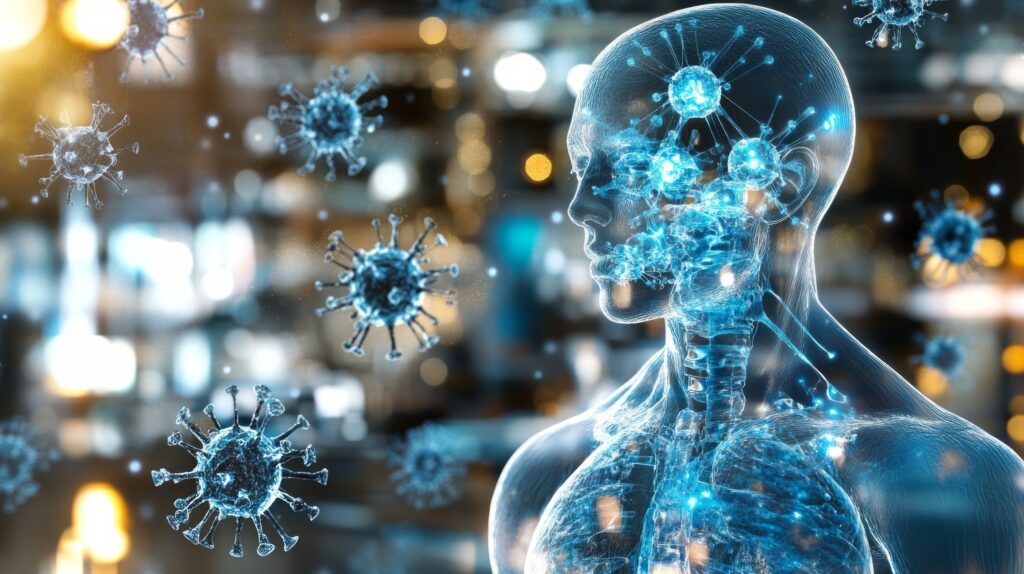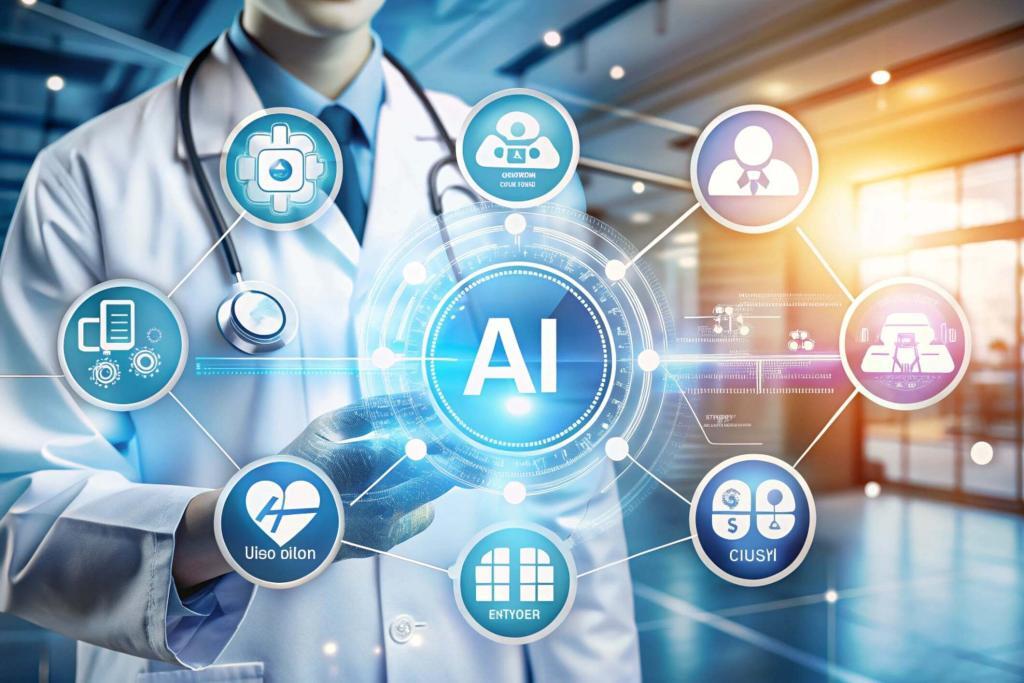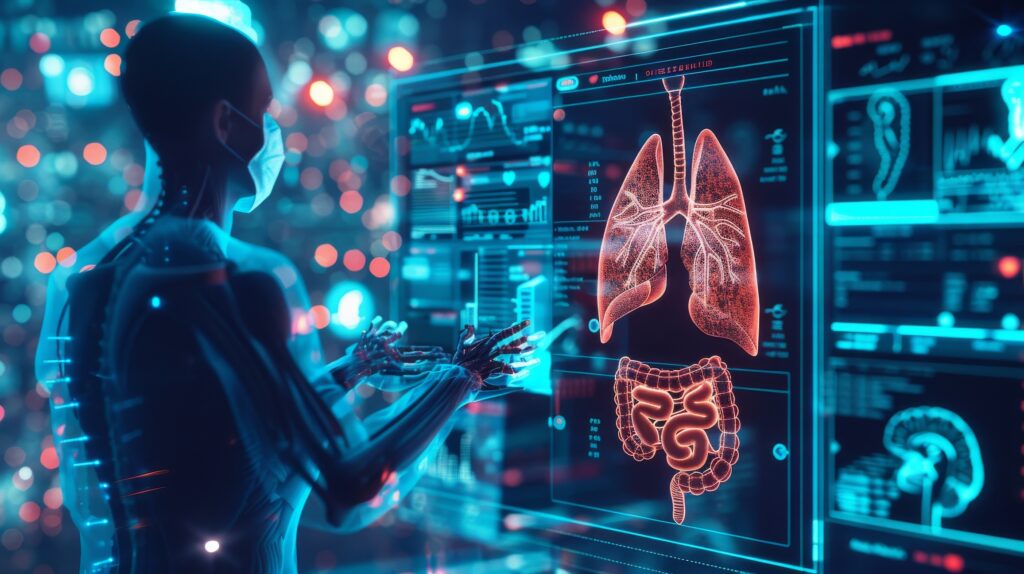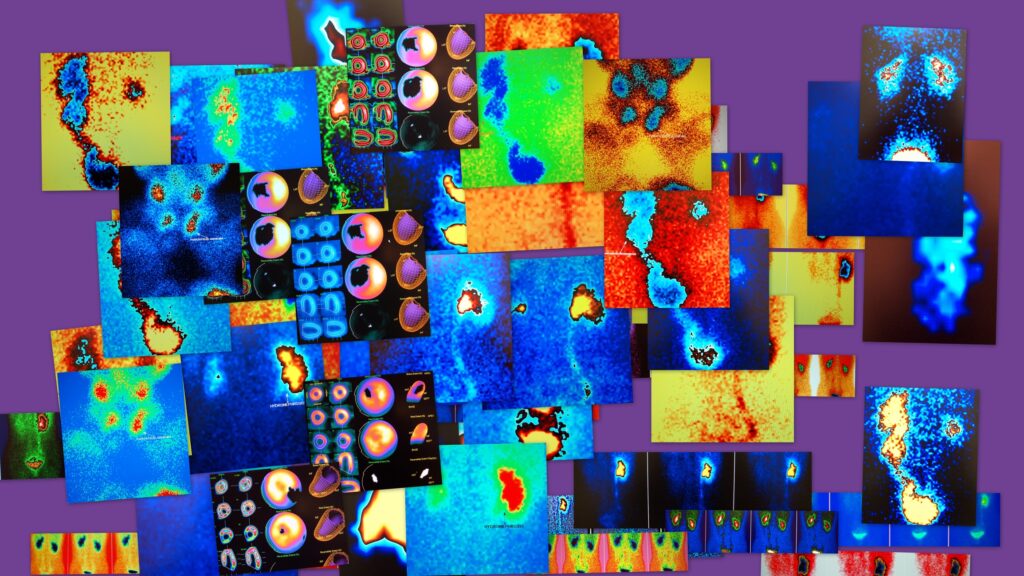Artificial Intelligence (AI) is reshaping healthcare, making diagnostics faster and more accurate. From identifying diseases earlier to enhancing treatment plans, AI is revolutionizing how doctors and hospitals operate. The world of medicine has always aimed for precision, but with AI, we’re entering a new era of efficiency and accuracy.
Diagnosing with Precision
One of AI’s greatest strengths in healthcare is its ability to improve diagnostic accuracy. Doctors are trained to spot patterns in symptoms and test results, but even the best human eye can miss subtle details. AI systems, however, can sift through massive amounts of data and detect patterns that humans might overlook. For example, AI can analyze medical images—like MRIs and X-rays—and quickly highlight abnormalities that might indicate diseases such as cancer, cardiovascular issues, or even neurological disorders.
This technology also helps reduce human error. AI tools, by continuously learning from data, provide reliable and consistent insights. That means quicker, more accurate diagnoses, leading to better patient outcomes. Imagine the time saved when a computer quickly points out a potential issue, allowing doctors to take immediate action.
AI and Efficiency in Treatment Plans
After diagnosing a condition, the next step is to decide the best course of treatment. This is where AI shines once again. Machine learning algorithms can help doctors by reviewing past cases and medical research, offering treatment recommendations based on data. These systems ensure that healthcare professionals make decisions that align with the latest advances in medicine.
AI doesn’t stop at suggesting treatments; it can track the success of those treatments too. With AI-driven tools monitoring patient progress, doctors can adjust plans as needed, making healthcare more personalized. For instance, AI can even analyze how patients respond to medications, predicting outcomes and suggesting alternatives. This personalized approach keeps treatments efficient and reduces the need for trial and error.
AI and Remote Monitoring
AI’s role in healthcare isn’t limited to hospitals or clinics. It’s also improving how we monitor patients remotely. Wearable devices and smartphone apps can track vital signs, such as heart rate, blood pressure, and oxygen levels. These tools send real-time data to doctors, who can monitor patient health without an in-person visit.
By utilizing AI in remote care, doctors can catch early signs of health issues before they become serious. If your heart rate spikes or your oxygen levels drop, AI can immediately notify your healthcare provider, who can respond swiftly. This proactive approach improves patient outcomes while reducing the need for emergency room visits.
Slideshow Makers in Healthcare Training
When it comes to training medical staff, a slideshow maker powered by AI can be invaluable. Imagine quickly creating engaging and informative presentations to educate healthcare professionals. By using a slideshow maker, doctors and nurses can learn from dynamic, well-organized slides that highlight key information about diseases, treatments, or procedures.
AI tools can generate these educational slides with a prompt, turning complex medical content into digestible visuals. This speeds up the process and ensures accuracy, helping professionals stay up-to-date with medical advancements. Whether you’re training a new nurse or providing continuing education to experienced doctors, a good slideshow maker can make learning faster and more engaging.
AI in Medical Imaging
Medical imaging is an area where AI is making significant strides. AI-driven platforms analyze thousands of images in a fraction of the time it would take a human. This rapid analysis can lead to earlier detection of conditions like tumours or bone fractures, speeding up the treatment process.
For example, AI systems can enhance MRI scans or X-rays, identifying hard-to-see issues. This leads to better treatment plans and reduces the number of unnecessary follow-up tests. When doctors can trust AI to handle imaging, they can focus more on patient care, knowing they have an extra layer of support.
AI imaging tools can also integrate with an AI video generator app to create visual reports. These reports are easily understood by both patients and medical staff, helping bridge communication gaps. For instance, if a patient has a complex issue, the AI video generator app can produce a simple video explanation, walking the patient through their diagnosis and treatment options.
Additionally, a video clipper can be used to extract key segments from these videos, allowing patients to focus on the most important information.
AI-Powered Drug Development
Another exciting area where AI is making waves is drug development. Creating new medicines takes years of research, testing, and trials. But AI is accelerating this process. By analyzing the structure of molecules, AI can predict how new drugs will interact with the human body, speeding up the development timeline.
Pharmaceutical companies are already using AI to design drugs that target diseases more effectively. These AI systems are able to sort through thousands of compounds, identifying those most likely to succeed. This doesn’t just save time—it also cuts costs, meaning new drugs could hit the market faster and be more affordable.
Conclusion
AI in healthcare isn’t just a trend; it’s transforming the industry. From diagnosing diseases with precision to improving treatment plans and making drug development more efficient, AI is everywhere. Healthcare professionals now have access to tools that streamline their work, reduce human error, and enhance patient care. And with technologies like AI slideshow makers and AI video generator apps, even training and communication are getting a much-needed boost.
The future of medicine looks promising, with AI at the forefront, guiding doctors and patients toward better outcomes.
Disclaimer:
The content provided in this article is for informational purposes only and does not constitute medical advice, diagnosis, or treatment. While Artificial Intelligence (AI) technologies show promise in enhancing healthcare delivery, all medical decisions should be made by qualified healthcare professionals based on individual clinical assessments. Open Medscience does not endorse any specific AI tool, platform, or application mentioned in this article, nor does it guarantee the accuracy or effectiveness of AI systems in every clinical context. Readers should consult with appropriate medical professionals before relying on any information related to AI in healthcare. Additionally, the inclusion of third-party tools such as slideshow makers or video generators does not imply endorsement or affiliation.




